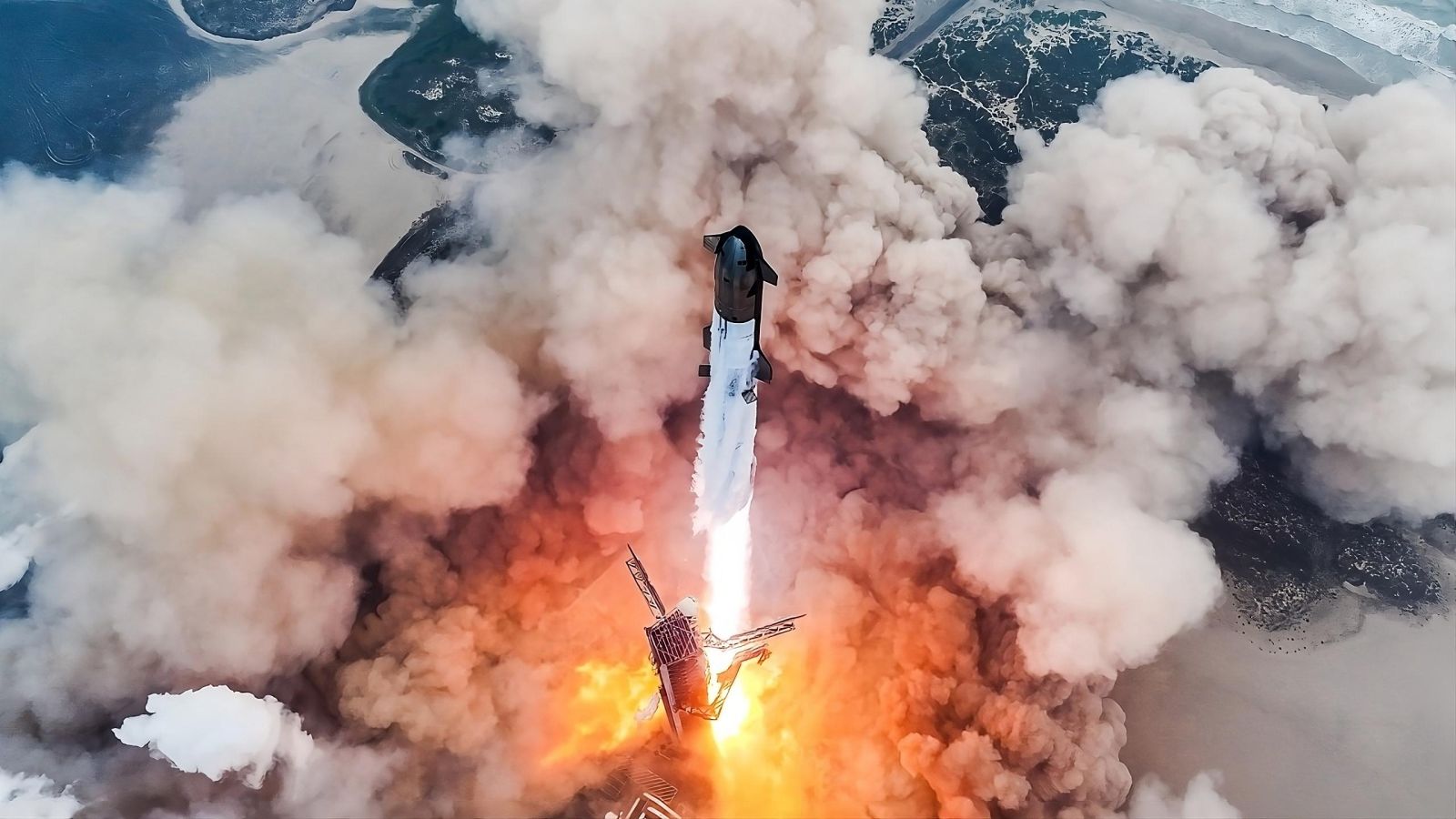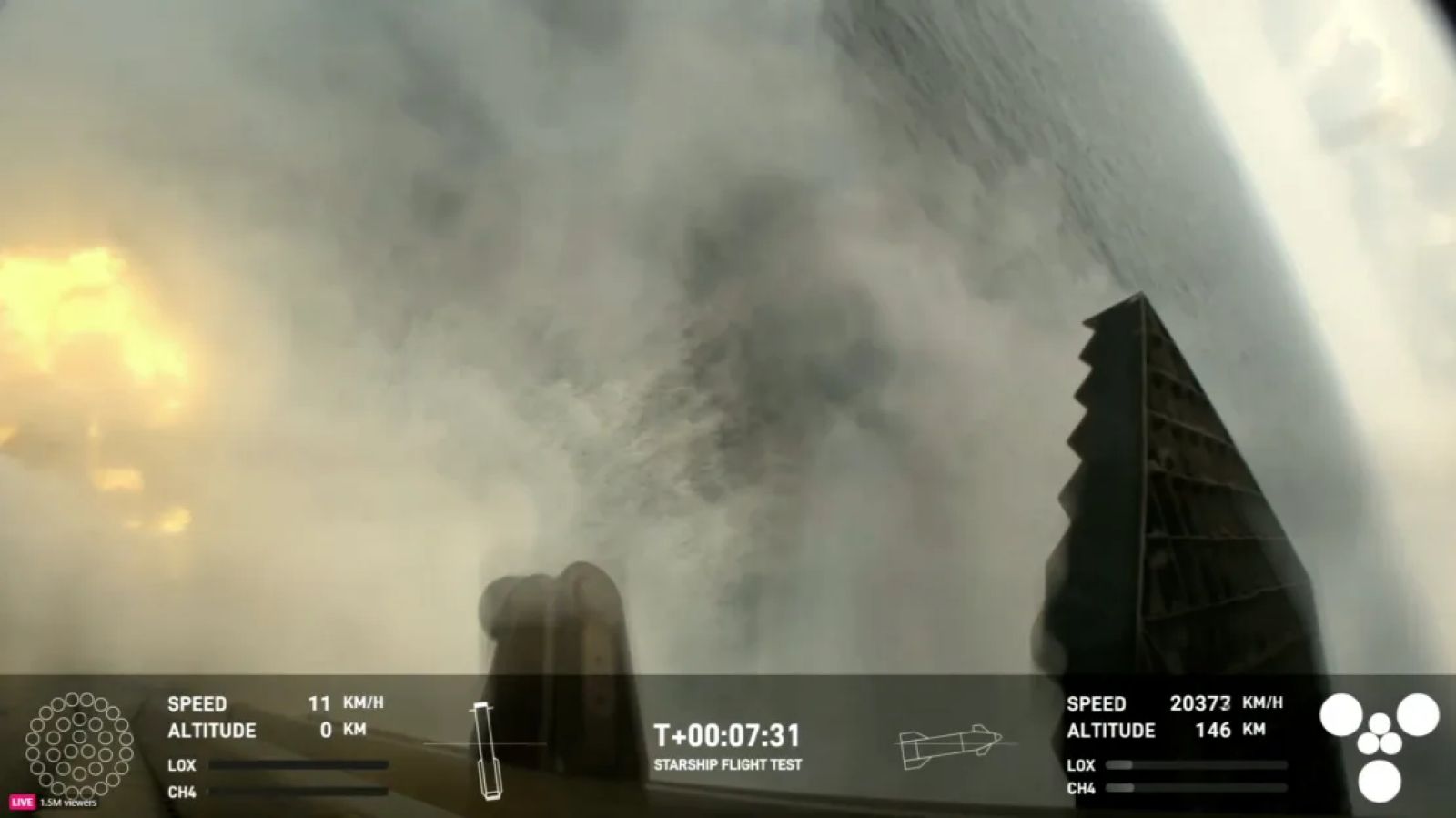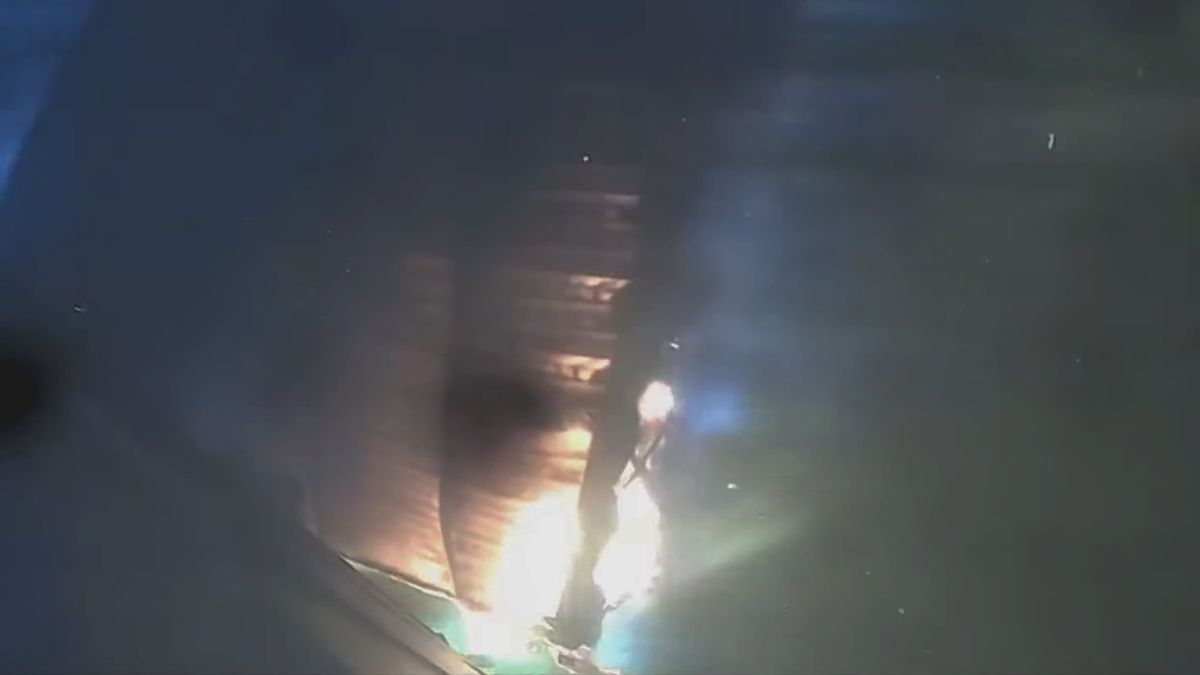Follow us on Google News (click on ☆)

Launch of the Starship for its 4th flight.
Credit: SpaceX
The primary objectives were to softly land the first stage, the booster called Super Heavy, in the Gulf of Mexico and to ensure a controlled re-entry of the second stage, also named Starship.
The success of the test was confirmed by Elon Musk, with the booster making a smooth splashdown after hovering for a few seconds above the sea.

Hovering over the sea for the Super Heavy booster.
Credit: SpaceX
For the Starship, fiery debris separated from the spacecraft during its descent over the Indian Ocean, northwest of Australia, as shown in impressive footage from the onboard camera.
Despite the loss of numerous thermal tiles and a damaged fin, the Starship managed to return to Earth smoothly. Elon Musk, founder of SpaceX, expressed his excitement, calling it a "great day for the future of humanity as a spacefaring civilization."

Although the fin burned and partially disintegrated, it ensured the stabilization and control of the vehicle, allowing for a smooth landing in the sea.
Credit: SpaceX
NASA's Artemis program will use Starship for the first crewed landing on the Moon, scheduled for 2026. More test flights will be needed to ensure the rocket's reliability, but each launch brings SpaceX closer to this ambitious goal.
Spectators and SpaceX employees celebrated the achievement with a symbolic toast using a Starship-shaped lighter. Kate Tice, a SpaceX executive, described the atmosphere as the loudest since the rocket's first flight.
Starship has made significant progress since its debut in April 2023. The fourth flight demonstrated notable improvements, promising a series of new tests in the near future. Elon Musk announced the goal of six additional test flights for 2024, aiming for a sustained pace to refine and perfect this giant spacecraft.